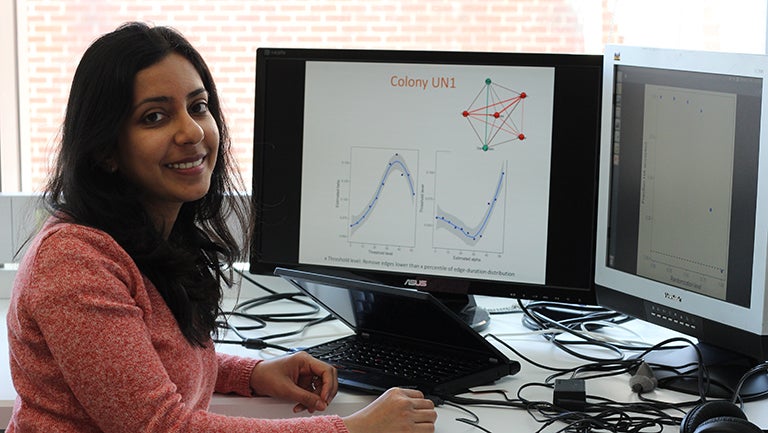Title: New Animal Infectious Disease Modeling Study Has Implications for Humans
Community formation does not universally protect animal populations from infectious disease outbreaks, according to a study published today by Georgetown biology professor Shweta Bansal and her research team in Proceedings of the National Academy of Sciences.

Community formation does not universally protect animal populations from infectious disease outbreaks, according to a study published today by Georgetown biology professor Shweta Bansal and her research team in Proceedings of the National Academy of Sciences.
First author and Georgetown Ph.D. candidate Pratha Sah, Bansal, and postdoctoral fellow Stephan T. Leu worked with scientists from the U.S. Geological Survey and Pennsylvania State University on the study, which the authors say has implications for disease control in both animals and humans.
Using computational network and infectious disease models, the research team looked at social network data from 43 animal species, including insects, birds, fish, reptiles and mammals.
COMMUNITIES DON’T PROTECT
Bansal says that it was previously assumed that the presence of communities helped to reduce the spread of infectious diseases in social animal species while retaining the benefits of social living such as increased mating opportunities, protection from predators and cooperative care of young.
“Our study rejects that hypothesis,” she says. “We found that the spread of infection is largely unaffected by the presence of communities.”
The team did find, however, that animal societies that are extremely subdivided experience smaller but longer outbreaks because disease gets trapped within local communities.
TARGETED Control Measures
“Our results suggest that an effective animal disease management should aim to control infection spillovers between communities when populations are less subdivided, “ Bansal says, “but should also aim to control local disease transmission within communities in highly subdivided animal populations.”
The scientists found that formation of communities is common across all animal populations, including both social populations such as ants, dolphins and chimpanzees as well as solitary species such as desert tortoises and Australian sleepy lizards.
“Theses animal populations become increasingly subdivided in the presence of a large number of communities and when animals avoid interacting with individuals outside their own community,” she explains.
LESSONS FOR Human Outbreaks
The findings may be relatable to human outbreaks of infectious disease, she says.
“Our study suggests that if there is an outbreak at a college, for example, control should focus on residence halls where the infection was first reported,” she says, “but in the surrounding town, control should focus on restricting travel from neighborhoods where the infection has been reported.”
“Although we know that social networks can be important for spreading diseases from one person to another, models are still needed that can predict how that spread will happen,” says Sam Scheiner, director of the National Science Foundation’s Ecology and Evolution of Infectious Diseases program. “The results of these experiments have provided critical information that can be used to model disease spread in other species, including humans.”